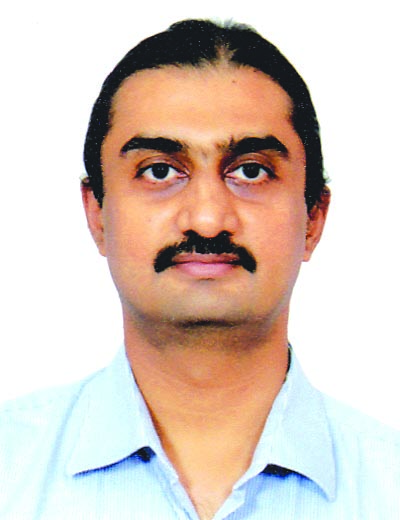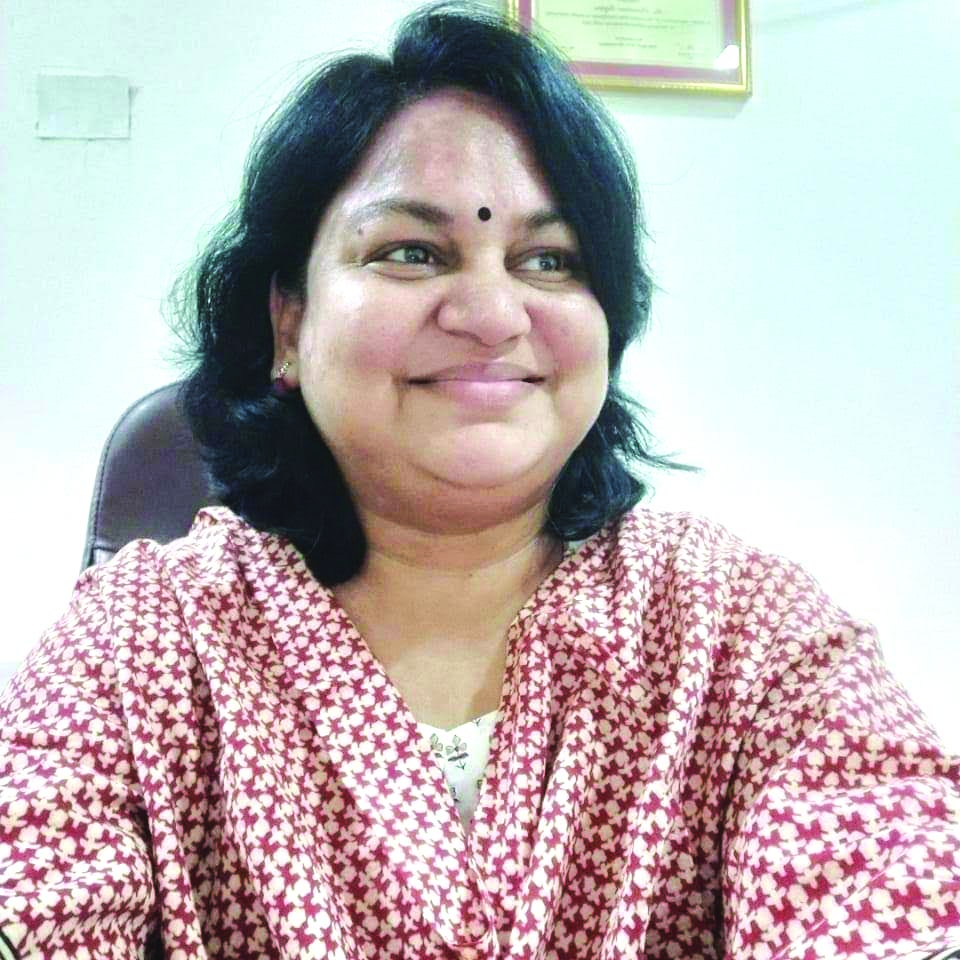Adolescents are especially susceptible to eating disorders with the starting point usually being growing obsession with physical beauty, body weight and shape, writes Aruna Raghuram

“I am forever engaged in a silent battle in my head over whether or not to lift the fork to my mouth, and when I talk myself into doing so, I taste only shame. I have an eating disorder.” — Jena Morrow, American author and activist.
Eating disorders are caused by complex mental health problems and are characterised by abnormal and extreme disruptions in eating habits and behaviour, which can severely damage healthcare and social interactions. Adolescents are especially susceptible to eating disorders with the starting point usually being growing obsession with physical beauty, body weight and shape.
Lady Diana, the Princess of Wales, famously suffered from the anorexia bulimic syndrome — an eating disorder. American singer, song-writer and actor Demi Lovato was also diagnosed with an eating disorder and would alternate between starving, over-eating and forcing herself to vomit. Now healed, she is a strong advocate of adolescent and young women developing positive body images.
Eating disorders are more common among adolescent girl children and young women. According to the American Academy of Child and Adolescent Psychiatry (AACAP), 10 percent of young women in the US suffer from eating disorders.
Dr. Sanjay Chugh, a Delhi-based senior consultant psychiatrist, believes that eating disorders affect 25-40 percent of adolescent girls and 20 percent of teenaged male children in India. “Most eating disorders are under-reported and under-researched in India because of the stigma surrounding it. Adolescents are especially vulnerable because the teen years are a period of intense physical, psychological and emotional change and children experience swings of emotional turmoil, high and low,” says Dr. Chugh.

Dr. Prerna Kohli, a Gurugram-based clinical psychologist and founder of MindTribe.in, concurs. “There has been a significant increase — from 1.7 to 2.8 percent — in eating disorders during the years 1990 to 2016, and that’s probably an under-estimate. Generally, they are more common in girl children, but adolescent male children and young men who exercise excessively and follow unhealthy diets are also susceptible,” says Dr. Kohli.
Following the nationwide Covid-19 pandemic outbreak, increased anxiety about health and well-being, restrictions on personal mobility and social interaction, excessive digital/social media usage, and sedentary lifestyles, have prompted a new surge in eating disorders among adolescents worldwide. For instance, an April 2021 study of the US-based Epic Health Research Network has found a 25 percent rise in hospital admissions related to eating disorders in the 12-18 age group during the pandemic.
COMMON EATING DISORDERS
The three common types of eating disorders are:
Anorexia Nervosa. This is the most common disorder with a high mortality rate. Symptoms include intense anxiety and fear of putting on weight and refusal to eat. Self-starvation is accompanied by intensive exercise and patients becoming severely underweight. Many anorexic teen girl children may also stop menstruating. This leads to osteopenia or early bone loss. Anorexia also causes heart damage, kidney diseases and other health problems, some of them serious.

“I recently treated a 17-year-old girl diagnosed with severe anorexia nervosa. Her weight was down to a mere 36 kg and the outline of her bones was visible on the arms and legs. But she still wanted to reduce weight. She also had amenorrhea — menstruation stoppage — and fainting episodes. Through a combination of medication, dietary changes and supportive therapy, we helped her gain weight and overcome her anxieties related to eating,” says Dr. Darshan Shah, psychiatrist, The Purple Centre, Ahmedabad
Bulimia Nervosa. Affected patients binge on large helpings of food followed by purging behaviour such as forced vomiting, using laxatives and diuretics. This see-saw binging and purging behaviour is very dangerous. Frequent vomiting can cause dehydration and imbalance in hormones and electrolytes, and could be fatal.
Binge eating disorder. Some people binge on large quantities of food in a short time period even when they are not hungry. Binge eaters often eat very fast and usually alone. Binging is followed by feelings of guilt and shame. But unlike in bulimia, there is no purging behaviour. Teens diagnosed with this disorder are generally obese.
Other eating disorders prevalent among teens include:
- Avoidant/Restrictive Food Intake Disorder (ARFID) is a lack of interest or distaste for some foods.
- Orthorexia is an obsession with healthy eating and dieting.
- Night Eating Syndrome is waking up and eating in the middle of the night.
- Muscle dysmorphia is more common among boys and is a fixation with developing muscles and the perfect physique.
- Compulsive Over Eating (COE) is not episodic (like binge eating) and happens all day.
EATING DISORDERS: MAJOR CAUSES

Purnima Gupta, psychotherapist and founder of Anahata Mental Health Clinic, Ahmedabad, says the major psycho-social causes of eating ailments among adolescents include “poor self-worth and body image issues, bullying by peers, cyber-bullying and social media abuse, peer pressure to look slim, unhealthy family environment, emotional trauma such as divorce or death of a loved one, and physical, emotional or sexual abuse.”
In our glamour-obsessed society which places high premium on physical beauty and form and promotes perfect body images through advertising, cinema and all-pervasive social media, there’s continuous pressure on adolescents to conform to accepted physical ideals. Growing body image obsession prompts teens to resort to extreme diets and punishing exercise routines with adverse physical and psychological consequences.
Comments Dr. Prerna Kohli (quoted earlier), who is currently treating an 18-year-old girl battling negative body image neuroses: “When I first met her, she suffered from intense anxiety, intense anhedonia, and low self-esteem. She used to starve herself and would avoid social media because she believed ‘I am not good enough as I have not achieved anything in life’. She was starving herself as a form of punishment for not achieving her goals and the perfect body type.”
HEALTH IMPLICATIONS

Eating disorders prompt severe iron, magnesium, B12, zinc, phosphorus, carotene deficiencies and of several other nutrients. “Obsessive dieting by adolescents leads to nutritional dwarfing, delayed puberty and abnormal liver function. On the other hand binge eating leads to obesity and malnourishment because of incremental consumption of junk food. In advanced cases of anorexia, there is danger of low body temperature and blood pressure. Sudden death is also a possibility when weight loss reaches below 35 percent of ideal body weight. As a nutritionist, I always advise my clients that eating right won’t lead to weight gain,” says Ishi Khosla, a well-known nutritionist and author and founder of The Celiac Society of India, Delhi.
TREATMENT
Health experts including psychiatrists and counsellors recommend a holistic, multidisciplinary approach to treating eating disorders. Purnima Gupta (quoted earlier) recommends psychotherapy sessions (Cognitive Behavioural Therapy — CBT) for body image and self-worth issues, supplemented with family therapy, diet monitoring and planning. Anxiety management treatment for dealing with anger and anxiety are also advisable.
Antidepressants and anti-anxiety medicines are the pharmacological interventions. In extreme cases hospitalization is necessary. Dr. Chugh advocates the use of Repetitive Transcranial Magnetic Stimulation (rTMS) in combination with conventional treatment for eating disorders.
Parents Guide
Psychiatrists and counselors interviewed for this story advise parents to follow this 10-point guide to help adolescents develop positive body image and prevent eating disorders.
- Never body-shame your child. Seek medical help to address child obesity, if necessary.
- Educate your child about how people come in different shapes and sizes and that this is part of nature’s diversity.
- Encourage them to cultivate healthy eating habits and engage in physical activity and exercise.
- Don’t be too preoccupied with weight issues and dieting yourself.
- Avoid using food as a reward for disciplining or completed tasks.
- Don’t overly focus on ‘bad’ foods. This makes adolescents feel guilty when they crave or consume those foods.
- Maintain a close watch on what your child is eating and provide healthy food options at home.
- Encourage the pursuit of extra-curricular interests and skills development.
- Explain to your teen that binge eating or excessive dieting are not the solutions for emotional problems.
- Restrain children from constantly posting photos on Facebook, Instagram, etc. Also prohibit membership of body building and fitness forums which project exaggerated body images.
- Consult a doctor/ counsellor if you suspect your teen is suffering eating disorders.
Also Read: My child is a fussy eater. Help!























